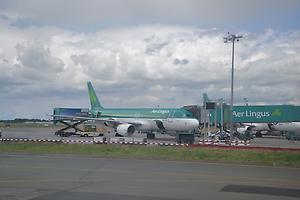The Irish Shamrock#
by Elisabeth Ertl Traditionally the shamrock is one of the national symbols of Ireland, like the harp or the high cross. It is often featured in logos of companies, like Aer Lingus or Irish ferries. A shamrock is known as a young sprig of clover or trefoil, either of the species Trifolium dubium or Trifolium repens. It is not unexpected that the name shamrock originates from the diminutive Irish word for clover, "seamróg", as Irelands vegetation is lush and shamrocks can be spotted all over the island.Long ago the clover was rumoured to have magical properties. For example, in ancient lore it is told that whoever pounded cloverleaves and rubbed them over the eyes could see an island of fairies between Rathlin Island and Ireland. Celts drank clover tea, because they believed that it would clean the blood. Some people mention that the shamrock and especially the number three were thought to be magical by the Celts and that therefore the plant became a lucky charm.
Myths tell us that St. Patrick, the patron saint of Ireland, used the clover as a symbol to explain the Trinity to the Celtic king Loaghaire. The three leafs represented the Father, the Son and the Holy Ghost. A drawing of a strange three-headed monster was presented by the druid of the clan to ridicule St. Patrick and his preaching of the Trinity. Nevertheless, the king listened to St. Patrick and allowed Christianity to be spread over the island without bloodshed.
Later on, during the turbulent politics of the late 18th century, the image of the shamrock formerly only associated with St. Patrick changed to an Irish national symbol. In 1801 the Act of Union between Britain and Ireland took force and the shamrock was incorporated into the Royal Coat of Arms of the United Kingdom. It is depicted as growing from a single stem beside the rose of England and the thistle of Scotland and emblematises the unity of the three kingdoms. This motive regularly is represented on British public buildings, like the Buckingham Palace.

Public domain
Sources:
- https://www.planet-wissen.de/laender_leute/irland/geschichte_irlands/wissensfrage.jsp (cited 2014 Dec 8)
- http://www.focus.de/reisen/irland/tid-5291/irland_aid_50558.html (cited 2014 Dec 8)
- http://www.ancient-symbols.com/german/irish-symbols.html (cited 2014 Dec 8)
- Wikipedia (cited 2014 Dec 8)



